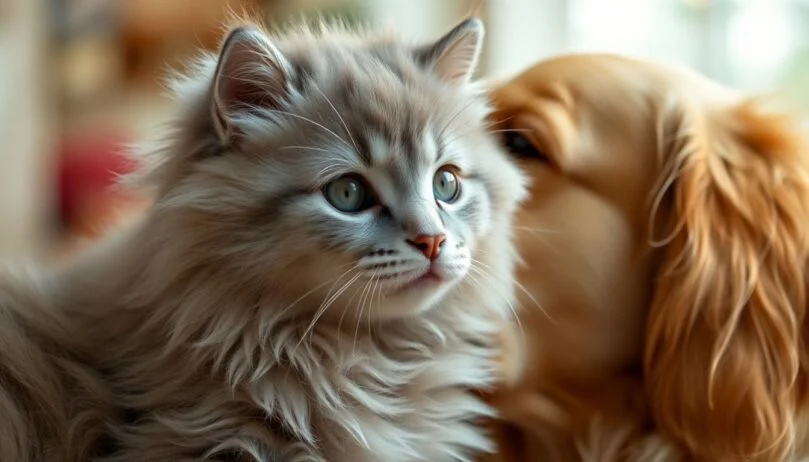Which Is More Affectionate, Cats Or Dogs?
- 18 December 2024
- BuyAPet Editorial Team
- All Cats, All Dogs, Cats and Dogs
Which Is More Affectionate—Cats or Dogs? A Friendly Comparison
Dogs tend to show affection loudly; cats often whisper it. Here’s how both species love us, why it varies, and how to encourage more cuddles whichever pet you have.
Dog Affection: Big Gestures
- Tail wags, face licks, full‑body wiggles at the door.
- Breeds like Labs, Goldens, and Cavaliers are famously cuddly.
- Training and socialisation amplify confident, affectionate behaviour.
Cat Affection: Subtle Signals
- Purring, slow blinks (“cat kisses”), head bumps and lap time.
- Affectionate breeds can include Ragdolls and Siamese.
- Choice and consent matter—let cats approach on their terms.
Side‑by‑Side
| Aspect | Dogs | Cats |
|---|---|---|
| Typical display | Enthusiastic, overt | Quiet, close‑contact |
| Daily frequency (owner‑reported) | Often higher | More variable |
| Shaped by | Training, breed, routine | Individual personality, environment |
What Shapes Affection
- Early socialisation and positive handling.
- Daily interaction and play that build the human‑animal bond.
- Genetics and breed tendencies.
Finding Your Best Fit
Choose based on lifestyle: high‑energy extroverts may love a social dog; quiet homebodies might enjoy a gentle, lap‑loving cat. Many affectionate pets await adoption.
FAQs
Are cats affectionate at all?
Yes—often in quieter ways like purring, slow blinks and choosing to sit close.
Which dog breeds are the most cuddly?
Labs, Goldens, Cavaliers and many mixed‑breeds are known for affectionate temperaments.
Can I make my pet more affectionate?
You can encourage it with gentle handling, play, training and respecting your pet’s boundaries.
Is affection just personality?
Personality matters, but socialisation and daily interactions shape it a lot.
This article is educational and not a substitute for professional veterinary advice. For persistent issues or medical concerns, consult your veterinarian.
